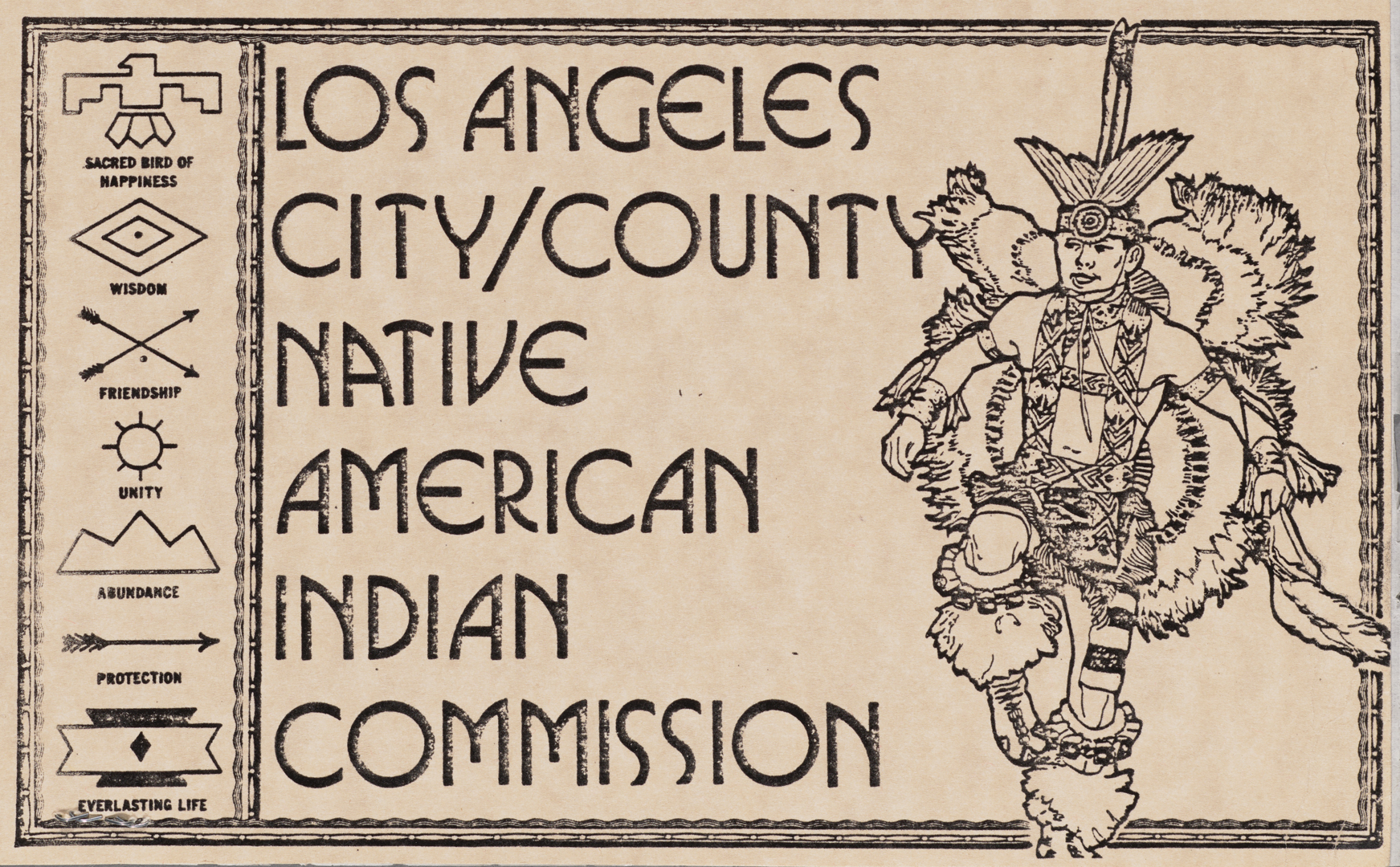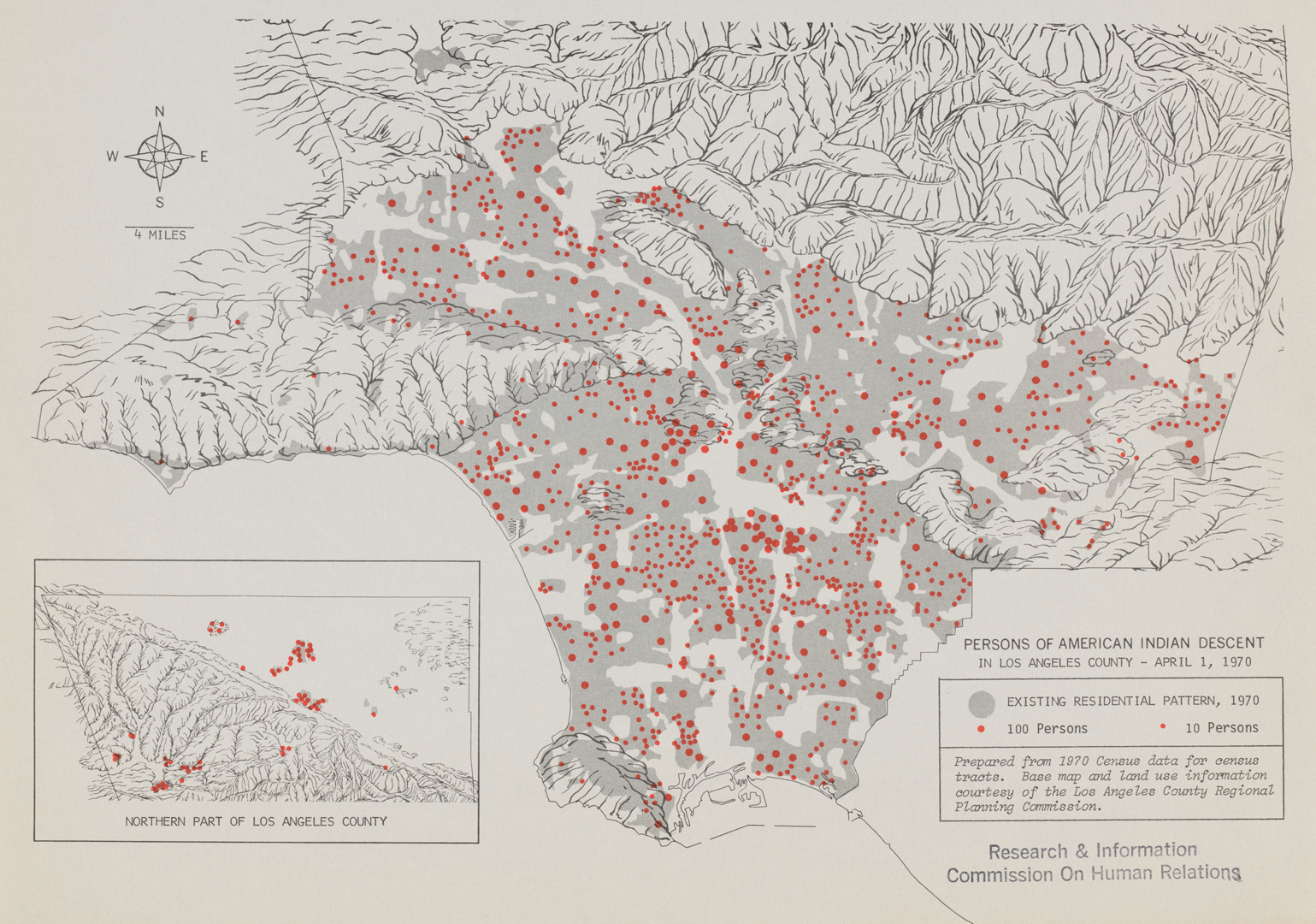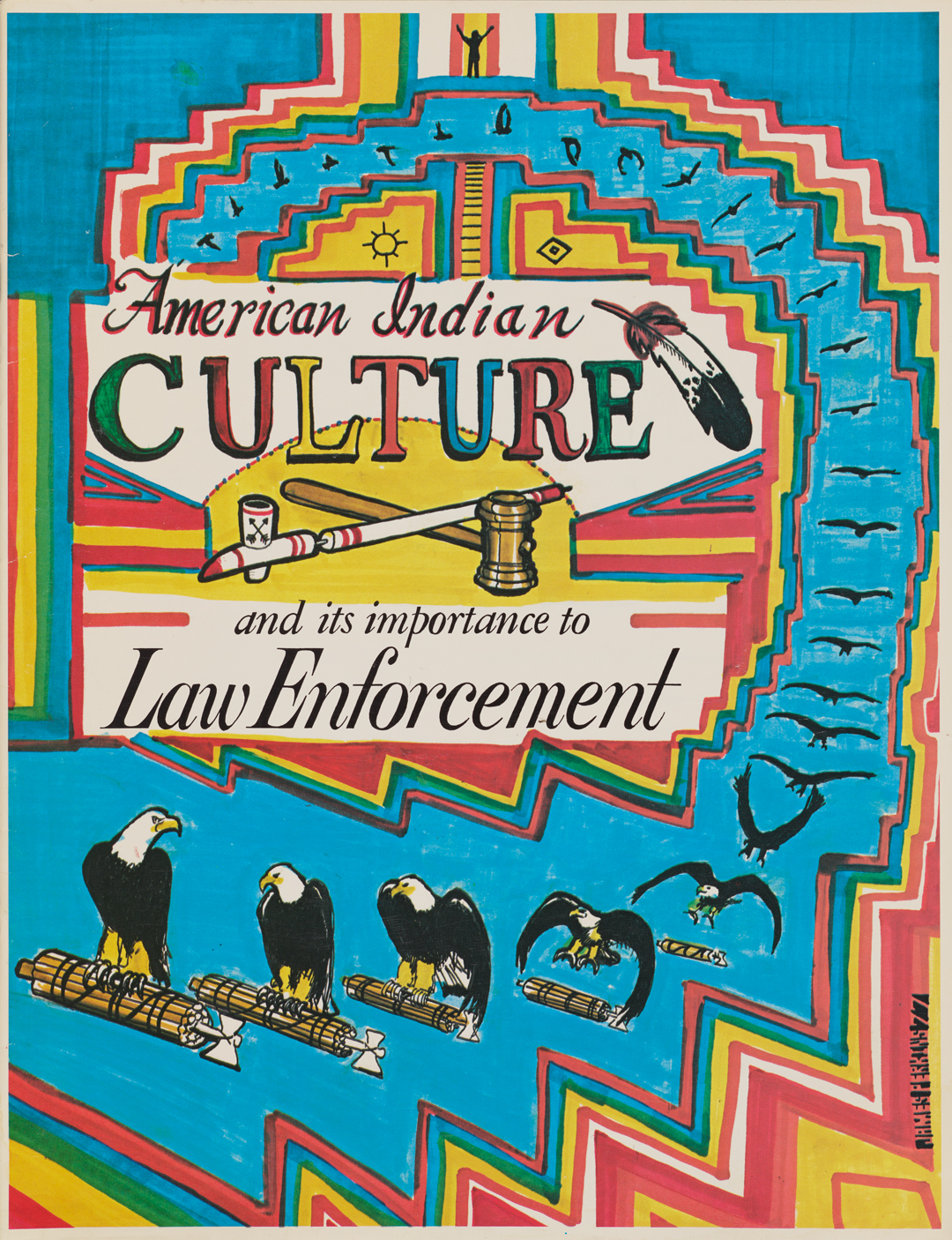
Invitation to a “Get Acquainted Breakfast” from the Los Angeles City/County Native American Indian Commission, 1981. Papers of Edmund D. Edelman. | The Huntington Library, Art Museum, and Botanical Gardens.
Los Angeles is home to the largest and most diverse urban Native American population in the United States—more than 100,000 people. Almost a half-century ago, Indigenous community members joined with city and county officials to create the Los Angeles City/County Native American Indian Commission (NAIC), a community-based governmental board meant to advocate for Native Americans, increase their visibility, and help allocate funding. According to the commission’s website, NAIC was the first of its kind in the United States when it was established in 1976. The city/county collaboration was seeking to address social and cultural issues within a population then estimated to be 60,000 people from more than 100 tribal nations. Much of this population had been displaced from across Indian Country, the legal and cultural term for Native lands in the United States.
The Huntington holds the papers of three Los Angeles County supervisors who were in office during parts of the commission’s history between 1976 and 2012: Edmund Edelman, Kenneth Hahn, and Gloria Molina. These large archival collections offer windows into many aspects of Los Angeles County and its history in the 20th and 21st centuries. The NAIC is one of those subjects, reflecting on the unique Native community in Los Angeles, its challenges, and the way its members have interacted with local governments. The commission—as anthropologist Joan Weibel-Orlando described it in her 1999 book, Indian Country, L.A.—serves as “an ombudsman, a public forum, a spokesman, a censor, an initiator of scores of position papers and policy statements, and an advocate of government action on the part of the far-flung Los Angeles Indian community.”

Persons of American Indian Descent in Los Angeles County, April 1, 1970, from the Los Angeles County Commission on Human Relations. Papers of Edmund D. Edelman. | The Huntington Library, Art Museum, and Botanical Gardens.
Los Angeles County has always been home to Gabrieleno/Tongva, Fernandeño Tataviam, Serrano, Kizh, and Chumash peoples. Due to a long history of migration, the Indigenous population has grown far more complex, and today’s NAIC, made up of 15 members, includes only one Gabrieleno/Tongva and one Fernandeño Tataviam representative. In the 19th and 20th centuries, large numbers of migrants, including Indigenous people, increased Southern California’s population. Among the “Okies” who came west during the Dust Bowl era of the 1930s were Native people from Oklahoma, formerly known as Indian Territory. During World War II, many Native people came to the region to work in the war industries alongside other recent migrants, or they settled here after serving in the war.
In the 1950s, the federal government initiated a “relocation” program that sought to dissolve tribal nations by encouraging Native people to move from rural reservations to cities, offering one-way bus tickets and sometimes empty promises of jobs and housing. These waves of migration created a complex, dispersed community that—as shown in the map above—had no single geographic center. (Today, we recognize that Los Angeles is home to many Indigenous people from Latin America, the Pacific, and elsewhere, as well as from what are now the United States and Canada.)
The “urban American Indian” population in Los Angeles County has endured numerous hardships. While some Native people found financial success, the majority lived below the poverty line. Many lacked access to health and social services. Adults faced discrimination when seeking housing or jobs, while children suffered discrimination in schools.
By the 1970s, some Native people, especially those in cities, took part in high-profile advocacy, often called Red Power. But away from the media spotlight, local activists “shifted the location of the Red Power movement from street demonstrations to grassroots Indian activism,” as Nicolas Rosenthal writes in his 2012 history of Native Los Angeles, Reimagining Indian Country.

American Indian Culture and Its Importance to Law Enforcement, a booklet jointly prepared by the American Indian Task Force of the Los Angeles County Commission on Human Relations and the Los Angeles County Sheriff’s Department, February 1977. Papers of Edmund D. Edelman. | The Huntington Library, Art Museum, and Botanical Gardens.
Native people often faced mistreatment by police. The booklet pictured above was one of many efforts by Los Angeles County’s governmental institutions to improve relations with the community. The American Indian Culture and Its Importance to Law Enforcement booklet sought to educate police officers about better ways to communicate with Native community members, who were disproportionately affected by the legal system.
The booklet informed staff that “[k]nowledge of American Indian attitudes can enable law enforcement personnel to perform their duties professionally, thereby minimizing unnecessary conflict and confrontation.” Native members of the county’s Human Relations Commission offered cultural insight into Native behavior. They also implored officers to avoid stereotypical words and ethnic slurs, urging respect of American Indians’ religious rights under the U.S. Constitution.
The booklet’s colorful cover art was created by James Perkins (Choctaw), who explained the imagery:
The descending eagle signifies the messenger of truth. The fasces (bundle of sticks) is the symbol of law in the white world.
After so long, the truth of our people will finally be heard.
The crossed pipe and gavel are symbols of two highly respected objects of two civilizations.
This is so that when an understanding is made, we may live in harmony with all of our brothers in our land.

Los Angeles County supervisors present a scroll of commendation to members of the Los Angeles Indian Center, declaring Sept. 24, 1976, to be American Indian Day. From left: Lincoln Billedeaux, executive director of the center; Supervisor James Hayes; Supervisor Kenneth Hahn; actor Iron Eyes Cody (born Espera Oscar de Corti); Supervisor Baxter Ward; Sister Grace Rabideaux, secretary of the Indian Center Board; Violet Brown, member of the Indian Center Board; Supervisor Ed Edelman; and Supervisor Pete Schabarum. Papers of Edmund D. Edelman. | The Huntington Library, Art Museum, and Botanical Gardens.
Native American Heritage Month was designated in 1990, and Indigenous Peoples’ Day has gradually taken the place of Columbus Day in recent years. But earlier forms of observance anticipated these. In Los Angeles, the Native community began an annual “Indian Day” picnic in 1928. The State of California designated an Indian Day observation in 1939, and it later became “California Indian Day” in 1968, celebrated on the fourth Friday of September. In September 1976, just two months after the U.S. bicentennial, Los Angeles celebrated American Indian Day.
The photograph above shows members of the newly formed Native American Indian Commission commemorating the date in 1976 with county supervisors. Note the presence of Iron Eyes Cody, an Italian American actor (born Espera Oscar de Corti) who passed himself off as American Indian until his identity was publicly revealed just before his death in 1999. Cody was one of the first members of the commission, which he joined a few years after his star turn as a “crying Indian” in 1971’s iconic Keep America Beautiful public service announcement. He was a ubiquitous member of LA’s Native American community, married to Bertha Parker (Abenaki/Seneca), who is often credited as the first Native woman archaeologist. Many community members suspected or knew that Cody’s Native identity was counterfeit. As scholar Michelle Raheja (Seneca) writes in her 2011 book, Reservation Reelism, Cody’s acting “ultimately fixes Native Americans in the distant past.” At the same time, Raheja quotes numerous Native community members who, upon Cody’s death, expressed appreciation for the way he advocated for more positive American Indian roles in Hollywood and financially supported members of Los Angeles’ Native community.
The county supervisors’ archives include evidence of conflict over who was legitimately Native, who should represent this complex population, how funding should be allocated, and many other issues that Native people in LA still grapple with today. (There is another detail that has remained consistent for nearly 50 years: Commission members receive just $10 per meeting, as stipulated in the body’s founding documents.) Yet the archives also document the creation of the Native American Indian Commission among numerous other organizations and efforts that sought to make life better for Southern California’s Native people.
The Huntington exists on the ancestral lands of the Gabrielino/Tongva and Kizh Nation peoples who continue to call this region home. The Huntington respectfully acknowledges these Indigenous peoples as the traditional caretakers of this landscape, as the direct descendants of the First People. The Huntington recognizes their continued presence and is grateful to have the opportunity to work and learn on this land.
Josh Garrett-Davis is the H. Russell Smith Foundation Curator of Western American History at The Huntington.
